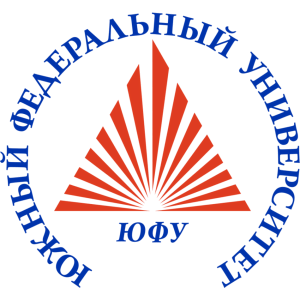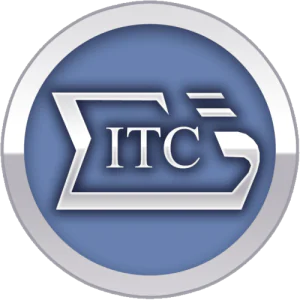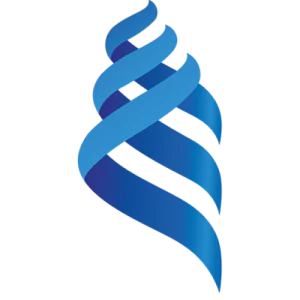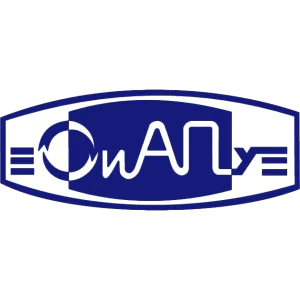Why does the B3LYP hybrid functional fail for metals?
The B3LYP hybrid functional has shown to successfully predict a wide range of molecular properties. For periodic systems, however, the failure to attain the exact homogeneous electron gas limit as well as the semiempirical construction turns out to be a major drawback of the functional. We rigorously assess the B3LYP functional for solids through calculations of lattice parameters, bulk moduli, and thermochemical properties (atomization energies and reaction energies). The theoretical lattice constants overestimate the experimental ones by approximately 1%, and hence behave similarly to the PBE gradient-corrected exchange-correlation functional. B3LYP atomization energies of solids are drastically worse than those of nonempirical hybrid Hartree-Fock/density functionals (HF/DFT) such as PBE0 and HSE03. These large errors can be traced back to the lack of a proper description of “free-electron-like” systems with a significant itinerant character (metals and small gap semiconductors). Similar calculations using the popular semiempirical B3PW91 hybrid functional, which fulfills the uniform electron gas limit, show a clear improvement over B3LYP regarding atomization energies. Finally, theoretical values for heats of formation for both the B3LYP as well as the B3PW91 functionals are presented. These document a most likely fortuitously good agreement with experiment for the B3LYP hybrid functional.
Top-30
Journals
|
5
10
15
20
25
30
35
40
|
|
|
Journal of Chemical Physics
36 publications, 7.02%
|
|
|
Journal of Physical Chemistry C
32 publications, 6.24%
|
|
|
Physical Review B
29 publications, 5.65%
|
|
|
Physical Chemistry Chemical Physics
28 publications, 5.46%
|
|
|
Journal of Chemical Theory and Computation
27 publications, 5.26%
|
|
|
Journal of Physics Condensed Matter
16 publications, 3.12%
|
|
|
Journal of Physical Chemistry A
16 publications, 3.12%
|
|
|
International Journal of Quantum Chemistry
11 publications, 2.14%
|
|
|
Chemical Reviews
9 publications, 1.75%
|
|
|
Journal of Molecular Modeling
8 publications, 1.56%
|
|
|
Applied Surface Science
8 publications, 1.56%
|
|
|
Theoretical Chemistry Accounts
7 publications, 1.36%
|
|
|
Computational and Theoretical Chemistry
7 publications, 1.36%
|
|
|
Journal of Physical Chemistry Letters
6 publications, 1.17%
|
|
|
Journal of the Electrochemical Society
6 publications, 1.17%
|
|
|
Journal of Computational Chemistry
6 publications, 1.17%
|
|
|
Journal of the American Chemical Society
6 publications, 1.17%
|
|
|
Chemistry of Materials
5 publications, 0.97%
|
|
|
Physical Review Letters
5 publications, 0.97%
|
|
|
Physical Review Materials
5 publications, 0.97%
|
|
|
Journal of Molecular Structure
5 publications, 0.97%
|
|
|
New Journal of Physics
5 publications, 0.97%
|
|
|
Chemical Physics Letters
5 publications, 0.97%
|
|
|
Computational Materials Science
5 publications, 0.97%
|
|
|
RSC Advances
5 publications, 0.97%
|
|
|
Molecules
4 publications, 0.78%
|
|
|
Journal of Physical Chemistry B
4 publications, 0.78%
|
|
|
ACS applied materials & interfaces
4 publications, 0.78%
|
|
|
Bulletin of Materials Science
3 publications, 0.58%
|
|
|
5
10
15
20
25
30
35
40
|
Publishers
|
20
40
60
80
100
120
140
|
|
|
American Chemical Society (ACS)
130 publications, 25.34%
|
|
|
Elsevier
78 publications, 15.2%
|
|
|
Springer Nature
54 publications, 10.53%
|
|
|
Royal Society of Chemistry (RSC)
51 publications, 9.94%
|
|
|
American Physical Society (APS)
41 publications, 7.99%
|
|
|
AIP Publishing
40 publications, 7.8%
|
|
|
Wiley
39 publications, 7.6%
|
|
|
IOP Publishing
26 publications, 5.07%
|
|
|
MDPI
10 publications, 1.95%
|
|
|
Taylor & Francis
8 publications, 1.56%
|
|
|
The Electrochemical Society
7 publications, 1.36%
|
|
|
Science in China Press
2 publications, 0.39%
|
|
|
Hindawi Limited
2 publications, 0.39%
|
|
|
Annual Reviews
2 publications, 0.39%
|
|
|
Canadian Science Publishing
1 publication, 0.19%
|
|
|
Mineralogical Society of America
1 publication, 0.19%
|
|
|
The Royal Society
1 publication, 0.19%
|
|
|
World Scientific
1 publication, 0.19%
|
|
|
Frontiers Media S.A.
1 publication, 0.19%
|
|
|
Pleiades Publishing
1 publication, 0.19%
|
|
|
American Institute of Mathematical Sciences (AIMS)
1 publication, 0.19%
|
|
|
IntechOpen
1 publication, 0.19%
|
|
|
Acta Physica Sinica, Chinese Physical Society and Institute of Physics, Chinese Academy of Sciences
1 publication, 0.19%
|
|
|
American Association for the Advancement of Science (AAAS)
1 publication, 0.19%
|
|
|
Bentham Science Publishers Ltd.
1 publication, 0.19%
|
|
|
Institute of Electrical and Electronics Engineers (IEEE)
1 publication, 0.19%
|
|
|
20
40
60
80
100
120
140
|
- We do not take into account publications without a DOI.
- Statistics recalculated weekly.


































